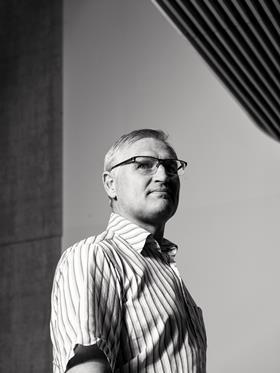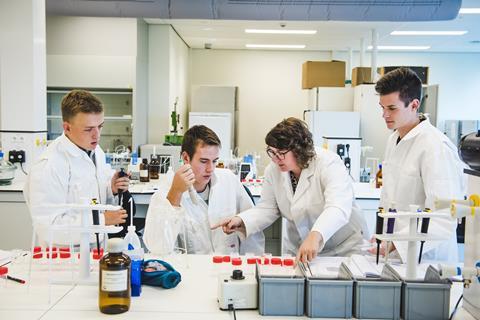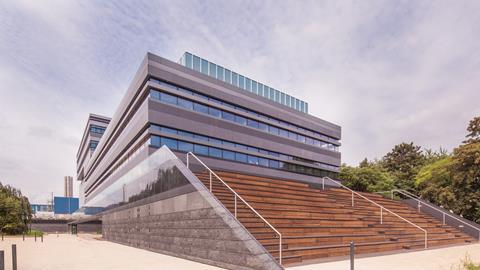Sometimes it is difficult for students to make the connection with practical research at companies. Several initiatives in the Netherlands are trying to stimulate this. The most advanced is CHILL on the Brightlands Chemelot Campus. ‘It is really about innovative challenges for which a company lacks something.’
Science parks are often a collection of companies that support each other and work together. But in many places in the Netherlands, educational institutions are also involved in the science parks. The institution with the most experience in combining education and research is CHILL, or Chemelot Innovation and Learning Labs, which is located on the Brightlands Chemelot Campus in Geleen. But those who think that CHILL has emerged from an elaborate blueprint are wrong. ‘A blueprint would lead to rigidity right from the start, while you actually need manoeuvrability and adaptive capacity’, says Gino van Strijdonck, one of the initiators of CHILL and chairman of the Material Sciences lectureship at Zuyd University.

When Van Strijdonck started at Zuyd University after a ‘typical academic career’, he was given the task of seeing what could be done with the infrastructure and knowledge of lecturers and questions from the field. ‘In all honesty, there was also a financial reason behind this’, Van Strijdonck admits. ‘In chemistry, you often have to juggle your money: there is equipment, the laboratory space, the management of it, and so on. So you have to be clever with your limited resources.’
Mature concept
But gradually a plan evolved. Couldn’t we do research for companies that would provide them with something concrete, for which we would receive some funding, which would be easily accessible and suitable for education?’ says Van Strijdonck. ‘That concept has now matured.’ When a grant or a company request comes in, you make a well-defined working proposal with a workgroup consisting of a maximum of three students (mostly hbo, sometimes mbo or university), an experienced professional and a PhD teacher-researcher.
‘We show that we, as experienced researchers, do not always know the answer right away either’
‘This workgroup looks for an answer to the concrete question’, Van Strijdonck continues. ‘We show that we, as experienced researchers, do not always know the answer right away either. However, we do often know which direction to think in. We get down to work together.’ And that has a very motivating effect, for the whole group. Everyone learns from it, not only the students, but also the company and the teacher-researchers. After the research, the students receive a grade from an independent assessor.
In between
The research is not carried out at the education location, but in the CHILL laboratories on the Chemelot site. Van Strijdonck: ‘This way you are close to the network, you can easily ask and arrange things. That actually shows the purpose of CHILL: students see how things work in the field, at the same time companies become acquainted with students.’
‘We have to be careful not to rigidify this concept too much in an educational structure’
But research costs money, especially when it concerns long-cycle and capital-intensive chemical research. How do you fund it? ‘By including it in the curriculum, asking companies for a contribution and combining subsidy applications’, Van Strijdonck explains. That research is in the intermediate Technology Readiness Levels (TRLs). That is how we bring research into practice, such as pilot plants. TRLs one and two are more proof-of-principle, TRL nine is industrial scale, and we operate a bit in between.’ The research is applicable, but not necessarily close to the market.
Flexibility
CHILL is a public-private partnership of companies and the entire education sector of higher education (wo), vocational education (hbo) and senior secondary vocational education (mbo). ‘Cooperation is often easier in the academic sector, because the projects are both very fundamental and contain trial and error elements, and it is easier to build flexibility into the educational programmes’, Van Strijdonck explains. ‘The mbo is slightly more complicated because it is a little more schooly than the hbo. It is full of ’check boxes’ that have to be ticked, preferably as efficiently as possible. That requires some flexibility on our part. Mbo graduates can enter via an internship in our research minor, for example, and they can then retain their own organisational form. Van Strijdonck has noticed that mbo study programmes have become more flexible recently. They see that it is necessary and that it is also beneficial. Slowly but surely, we are adapting to each other.’
In general, however, there is a danger with initiatives such as CHILL, Van Strijdonck thinks. ‘We have to be careful not to let this concept become rigid in an educational structure, that it becomes a box-ticking exercise. My fear is that if organisations such as SIA get involved, it will become a ‘trick’.’ Instead, you must ‘achieve success through flexibility’ and ‘develop programmes by doing, and not by drawing up blueprints’. Van Strijdonck concludes: ‘We have not come up with a winning concept; every institution is free to do it in its own, suitable way.’

Other initiatives
Hanze University Groningen: This university of applied sciences has several innovation workshops and knowledge centres where learning and issue-oriented research take centre stage. Examples are the Biobased Economy Knowledge Centre and the ALIFE expertise centre. At the latter, students, teacher-researchers and regional entrepreneurs also come together to work on issues. The equipment and the network are accessible to everyone within ALIFE.
HAN/Pivot Park: At the end of 2020, the University of Arnhem and Nijmegen (HAN) announced its collaboration with Pivot Park in Oss. The HAN will have a lectureship at the Pivot Park, with its own lab and office. Through the research group Drug Discovery, students and lecturers will be confronted with current pharmaceutical issues, which they will tackle together with the companies present. Students from Avans University of Applied Sciences can also participate.
NHL Stenden: this university of applied sciences works with the concept of Design Based Education. From the start of their studies, students work on practical issues. Unique are the so-called Ateliers, a learning community where students, teachers and professionals from the field get to work on those issues, experiment, design and produce.
Avans University of Applied Sciences/HZ University of Applied Sciences: within the Centre of Expertise Biobased Economy and the biobased minors of these universities, students work together with teachers, entrepreneurs and scientists. There are many internships available and students are encouraged to think along with regional challenges of companies or governments.













Nog geen opmerkingen